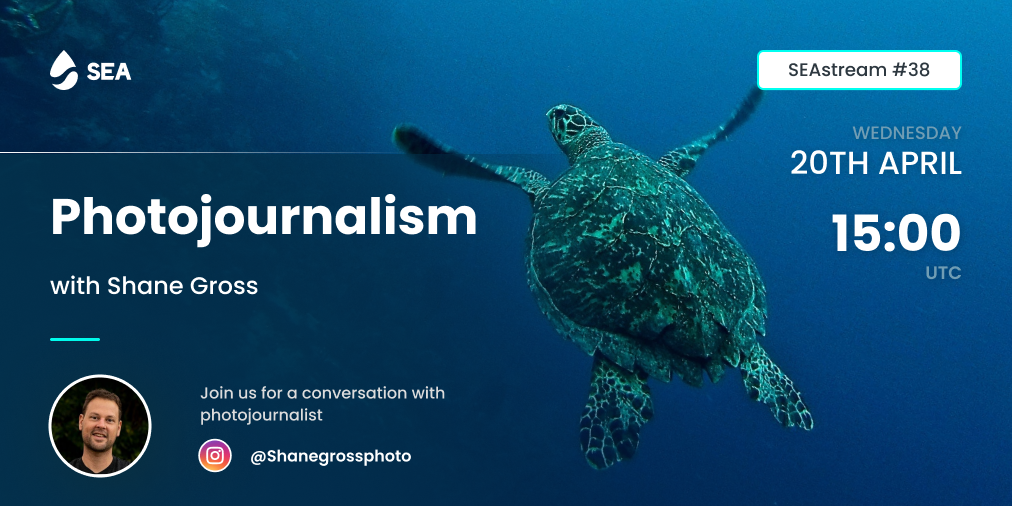How can Photojournalism Drive Ocean Conservation?

Stories have great emotional power. By sparking our imaginations and asking us to connect with characters, plots, and themes, stories are undoubtedly one of the strongest forms of communication we have. Visual stories, in particular, are a universal form of communication that inspire emotional responses (and sometimes even action!) in viewers.
Environmental photojournalists often aim to do exactly that. By conveying the magic of underwater worlds to their audiences, photographers connect people with ecosystems they would otherwise know nothing about. Photos are a form of art, able to be interpreted by the viewer. Any photo of the natural world can convey some type of story or narrative that inspires creativity, wonder, and potentially even new ideas.
We take photos of the outdoors to showcase natural beauty, and to capture the indescribable emotions that it makes us feel. Have you ever seen a beautiful sunset over the water — and noticed at least ten people taking photos and videos of it? There is clearly some innate desire to capture what we feel and see in the outdoors, and share it with others. Environmental photographers yield their talent, skill, and passion for the natural world to share photos with a specific purpose: inspiring environmental conservation efforts.
Conservation photography is defined as “the use of the photographic process and its products within the parameters of photojournalism to advocate for conservation outcomes.” By remaining issue-oriented, these types of photos can expand public awareness of environmental degradation and habitat destruction. The hope is that through these visual stories, action is taken towards a solution.
Visual storytelling can be particularly impactful in the context of underwater worlds. Hundreds of thousands of people may never get a chance to go snorkeling or scuba diving in gorgeous coral reef habitats. Others may live inland their entire lives. Because of this, not all of us are witness to the beauty and marvel of marine life. We’re especially oblivious to the ways that human activity harms, degrades, and sometimes destroys ocean ecosystems. The ocean is a largely unexplored space, a place that many consider to be otherworldly. Ocean photographers serve the special role of trying to capture the essence of that place for those of us who breathe air, and to communicate how special and fragile it really is.
Have you ever seen a photo of a turtle tangled in some type of plastic? We bet you have. Images of sea turtles and dolphins caught in fishing nets or other plastic debris often make rounds on social media platforms for their disturbing nature. An excellent example of the power of marine photojournalism is the wave of straw bans implemented after a viral video of a choking sea turtle. Major retail chains, companies, and even entire countries banned plastic straws after a wave of #savetheturtles took over social media. While ditching plastic straws is a tiny step in the right direction, the movement demonstrates how visual stories can resonate with people all over the world–motivating them to do something.
So, how can photojournalism continue to drive ocean conservation? We’ll be discussing this exact topic with award-winning underwater photographer Shane Gross this Wednesday, April 20th, at 15:00 UTC. Join us live on Instagram for an interview where we’ll ask the questions you send us on Twitter, @sea_token. The best 5 questions have a chance to win $20 worth of $SEA. Read more about SEAstream #38 here.

Leave a Reply